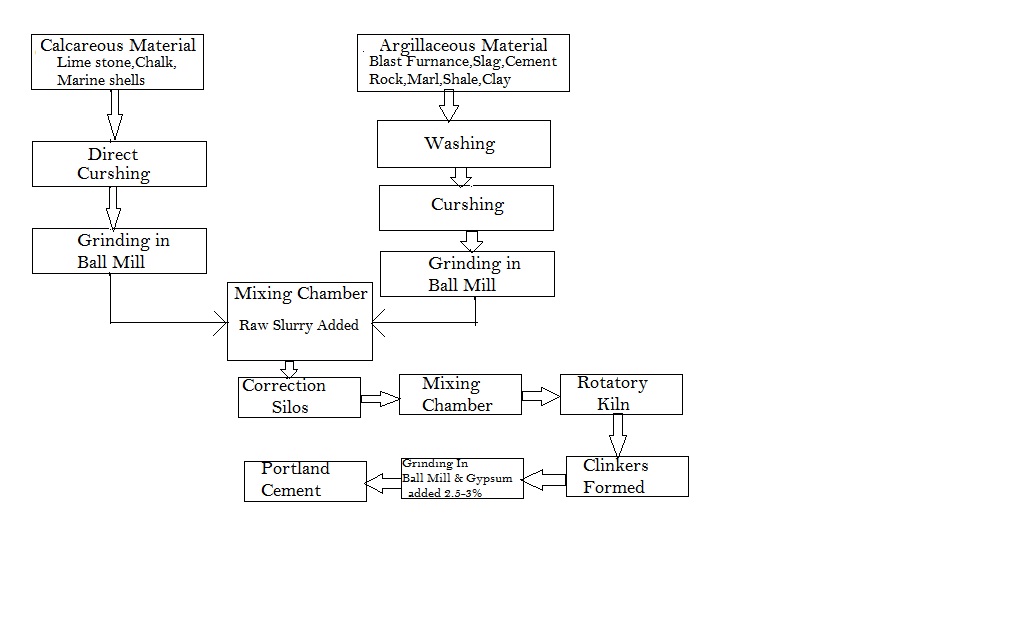There are four bouge's Compounds.
1. Tri Calcium Silicate (Aelite) C3S:-
Formula = 3CaO.SiO2
Percentage = 40%
Functions:-
2. Di Calcium Silicate (Belite) C2S:-
Formula = 2CaO.SiO2
Percentage = 32%
Functions:-
- It provides hardness and strength in final/later days.
- Less heat of hydration.
- Due to less heat of hydration , in initial days sulphate acid attack is less.
- More heat of hydration in later/final days (240 KJ/Kg).
Formula = 3CaO.Al2O3
Percentage = 10%
Function:-
- It provides quick hardening.
- Heat of hydration (864 KJ/Kg).
- Flash-set.
- It provides initial setting.
Formula = 4CaOAl2O3Fe2O3
Percentage = 8%
Function:-
- It provides quick setting.
- Heat of hydration (420KJ/Kg).
A B C Fraud आदम है l
A- Aelite
B- Belite
C- Celite
F- Felite
Flash-Set:-
- Flash set is the stiffening of cement paste without strength development with heat evolution. It is caused by (C3A).
- Tri Calcium Aluminate reacts immediately with water & is responsible for flash set.
Water Requirement for hydration:-
Hydration of cement is exothermic process.
Bound Water = 23%
Gel Water = 15%
Total Minimum = 38%
Rate of Heat evolution ➝C3A>C3S>C4AF>C2S
Rate of Hydration →C4AF>C3A>C3S>C2S
Special Points:-
- It is found that OPC achieves 70% of its final strength in 28 days and about 90% in one year.
- Gypsum is added to cement to reduce flash setting.
- Gypsum is usually mixed with clinker before final grinding.
- Gypsum retards setting time of cement.
- Excess of gypsum makes cement unsound.
- So gypsum added to clinker should not be greater than (2.5-3%).
There are two process of manufacturing of cement.
- Dry Process
- Wet Process
- In the dry process the calcareous and argillaceous materials are crushed and grinding separately and after grinding mixed in the mixing chamber with 4% amount of water.
- After mixing the calcareous and argillaceous materials the mixed proportin comes in the correction silos.
- In correction silos some materials added in the mixed powdered form of cement.
- And again in mixing chamber.
- After the mixing process the powdered form of cement comes in rotatory kiln for heating purpose at a temp. 1400°C.
- After the heating process the material comes in the correction silos.
- In correction silos some materials are added and clinkers are formed.
- Clinkers are the small pieces of mixed material.
- Again clinkers are grinding and 2.5-3% of gypsum is added.
- And the Portland cement is obtained by the dry process.
- Packing and transporting is done of cement.
- In the wet process the calcareous materials are directly crushed and the argillaceous materials are first washed and then crushed.
- After crushing the materials the grinding is done in Ball Mill / Tube Mill.
- Both grinded materials are mixed in the mixing chamber and raw slurry is added.
- After that all the processes are same as the dry process.
- And Portland cement is obtained by wet process.




Nice blog, Thank you for sharing this informative blog with us. bonded ferrite
ReplyDeletePost a Comment